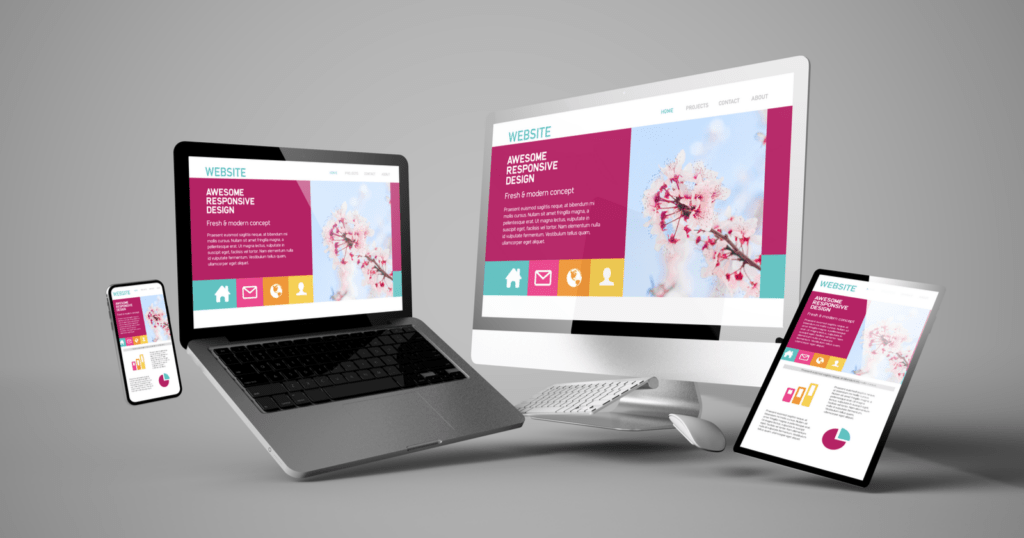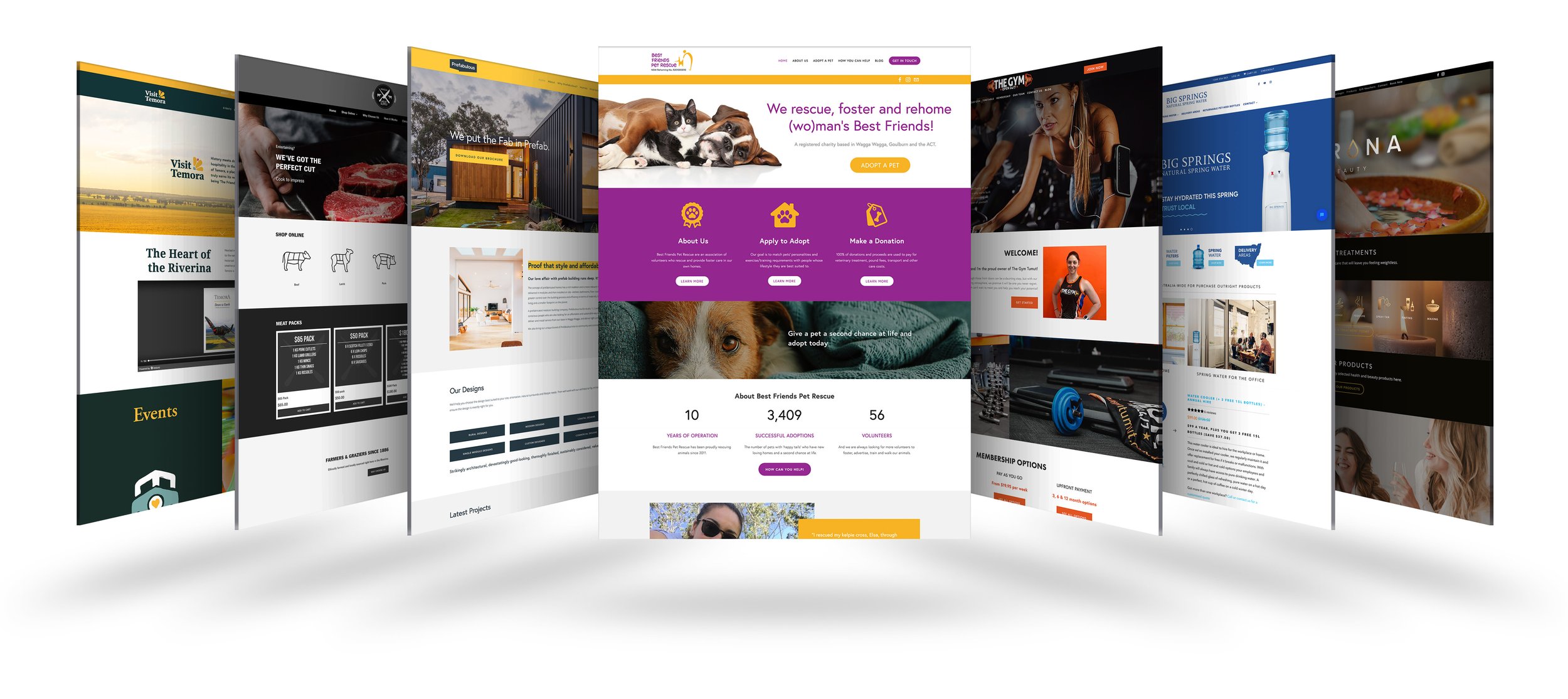Top Tips for Developing an Impactful Web Site Layout That Converts
In today's electronic landscape, the value of an impactful web site style can not be overstated, specifically when it comes to transforming visitors into clients. To accomplish this, one have to consider a variety of factors, consisting of recognizing the target market, prioritizing individual experience, and maximizing for mobile platforms. The calculated use of compelling call-to-actions and a well-defined visual pecking order plays a vital role in guiding users via their trip. As we discover these important aspects, it becomes evident that the success of your web site pivots on greater than just looks; it calls for a thoughtful approach to layout and capability.

Understand Your Target Market
Understanding your target market is fundamental to effective site design, as it prepares for producing an appealing user experience. Identifying who your individuals are, including their demographics, preferences, and actions, allows designers to tailor the web site's material, design, and capability to fulfill particular demands.
Carrying out extensive marketing research is vital in this procedure. Studies, meetings, and analytics can offer useful insights into user assumptions and discomfort points. By compiling this information, designers can produce user characters that represent different segments of the audience, ensuring that style choices are notified and appropriate.
Furthermore, recognizing the target market assists in choosing appropriate design aspects such as color design, typography, and imagery that resonate with customers. A site that speaks straight to its audience fosters a feeling of connection and count on, urging longer gos to and greater conversion prices.
Ultimately, a user-centered method to web site layout not only enhances user fulfillment however additionally supports company goals by driving involvement and commitment. By focusing on the demands and choices of the target audience, a web site can successfully offer its objective and attain desired outcomes.
Prioritize User Experience
To improve the overall effectiveness of a site, prioritizing customer experience (UX) is crucial (Website Design). A properly designed UX ensures that site visitors can browse the website easily, discover info quickly, and involve with content meaningfully. This causes enhanced customer fulfillment and higher conversion rates
Begin by implementing user-friendly navigating. Menus should be realistically structured, enabling users to situate essential locations of the site with minimal effort. Consistency in layout elements, such as shade systems and font styles, promotes knowledge, which is essential for keeping customer engagement.
Additionally, think about the loading speed of your internet site. A hold-up of simply a couple of secs can bring about substantial drop-offs, as users are less most likely to await a slow-loading web page. Simplifying images and enhancing code can boost efficiency and keep visitors.
By focusing on user experience, you not just develop try this site a more satisfying atmosphere for site visitors but likewise reinforce your brand's reliability. Eventually, a focus on UX is an investment in the lasting success of your website.
Enhance for Mobile Tools
Optimizing for mobile gadgets is important in today's digital landscape, where a boosting variety of users accessibility internet sites with smartphones and tablets. A mobile-friendly layout not just enhances user experience yet also plays a considerable function in boosting online search engine rankings. To accomplish this, it is vital to embrace a receptive design that immediately adapts to numerous display sizes and positionings.

Packing rate is another important element; mobile customers are commonly less individual and expect quick access to information. By focusing on mobile optimization, you guarantee that your site continues to be affordable and efficiently engages a broader target market.
Usage Compelling Call-to-Actions
A website's effectiveness usually rests on its capability to lead visitors toward preferred activities, making engaging call-to-actions (CTAs) vital elements of style. CTAs work as the essential factors that direct customers to engage with the website, whether that implies buying, signing up for an e-newsletter, or downloading and install a resource.
To develop effective CTAs, quality is paramount. Use concise language that plainly connects the action you want try this out the customer to take.
Furthermore, take into consideration using directional hints, such as arrowheads or photos, to guide users toward these switches. By concentrating on Learn More these aspects, businesses can considerably improve user engagement, driving conversions and ultimately attaining their website's goals.
Focus on Visual Power Structure
Efficient site style counts heavily on a well-structured aesthetic hierarchy that guides individuals through web content seamlessly. By organizing elements in a way that prioritizes information, developers can improve individual experience and help with decision-making. This involves using size, shade, comparison, and spacing tactically to draw interest to the most important elements of a webpage.
Making use of larger typefaces for headings and subheadings develops a clear difference in between various sections, permitting users to scan content effortlessly. Additionally, employing different shades for buttons and calls-to-action can catch user interest and urge interaction. Whitespace is one more essential part; it avoids clutter and makes it possible for individuals to concentrate on crucial messages without disturbances.
Images and graphics need to complement the text while also adhering to the recognized hierarchy, enhancing the total message (Website Design). Uniformity in design components, such as color design and typography, additional strengthens the aesthetic power structure, making navigating intuitive

Verdict
To conclude, effective internet site design necessitates a thorough understanding of the target market, prioritization of customer experience, and mobile optimization. The tactical use of compelling call-to-actions and a well-defined aesthetic pecking order even more boosts user interaction. By carrying out these principles, web sites can achieve higher conversion rates, making sure that layout elements not just draw in site visitors however likewise help with smooth navigating and communication. Eventually, a well-executed web site style functions as a crucial component in driving customer actions and attaining organization purposes.